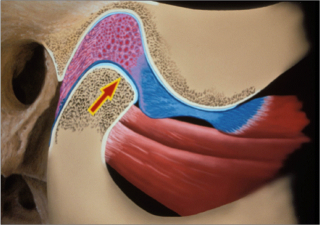When Should I Worry About a Jaw Click?
By Steve Ratcliff on May 6, 2015 | 2 comments Clicks in the jaw joints are a really common finding in our patients. The question we most often hear is “how do I know it is ok to do the dentistry if my patient has a jaw click?”
Clicks in the jaw joints are a really common finding in our patients. The question we most often hear is “how do I know it is ok to do the dentistry if my patient has a jaw click?”
There are many kinds of joint noises and many answers to this question. I think the real question is how comfortable are you in managing a patient with a true temporomandibular dysfunction (TMD)? I have made the decision not to treat complex joint issues. Yet, I have lots of patients who have some degree of TMD who are in need of restorative care.
It helps to understand what a click looks like, the short video clip below illustrates how the noise occurs as the condyle translates and clicks onto the disk on opening and then back off again on closing.
Watch this video - Jaw Click_NEW
Normal healthy joints are silent on opening and closing. A click indicates some degree of damage to the disk or retrodiscal tissues. A key question to ask is, when does the noise occur? The implication is less of a concern than if the click were occurring very early in opening and late in closing or a rotational click. Clicks occurring in rotation might mean a medial pole injury and the possibility of an unstable joint. Further examination and understanding of the patient’s history is important.
There are three key questions to ask in order to know if it is safe to do routine restorative dentistry.
- Has the noise changed in volume or character over the last two years? No change would indicate some degree of stability rather than a joint still in an active disease state. If the patient is still undergoing changes then doing any restorative dentistry that might change the bite could either contribute to further breakdown or at best have to be redone if the changes that occur are significant.
- Is there any pain associated with the movement? Pain indicates that there is inflammation present either in the joint or surrounding tissues. A joint that is painful is unstable and no dentistry should be done until the pain is fully understood and resolved.
- Is there any restriction of movement of the mandible? Restricted movement indicates either a significant muscle issue or disk damage that is preventing a full range of motion. If the limited movement is occurring because of a joint or disk that is continuing to deteriorate then understanding the cause is imperative before doing any dentistry.
If the answers to all three of these questions are no, then it is probably OK to do the case in the face of lateral pole or translational noises. If any of the answers are yes then further investigation is indicated or referral to someone who is well versed in treating TMD. This course in the Spear Course Library goes into much more detail.
Steve Ratcliff, D.D.S., M.S., Spear Faculty and Contributing Author

Comments
May 7th, 2015
May 8th, 2015